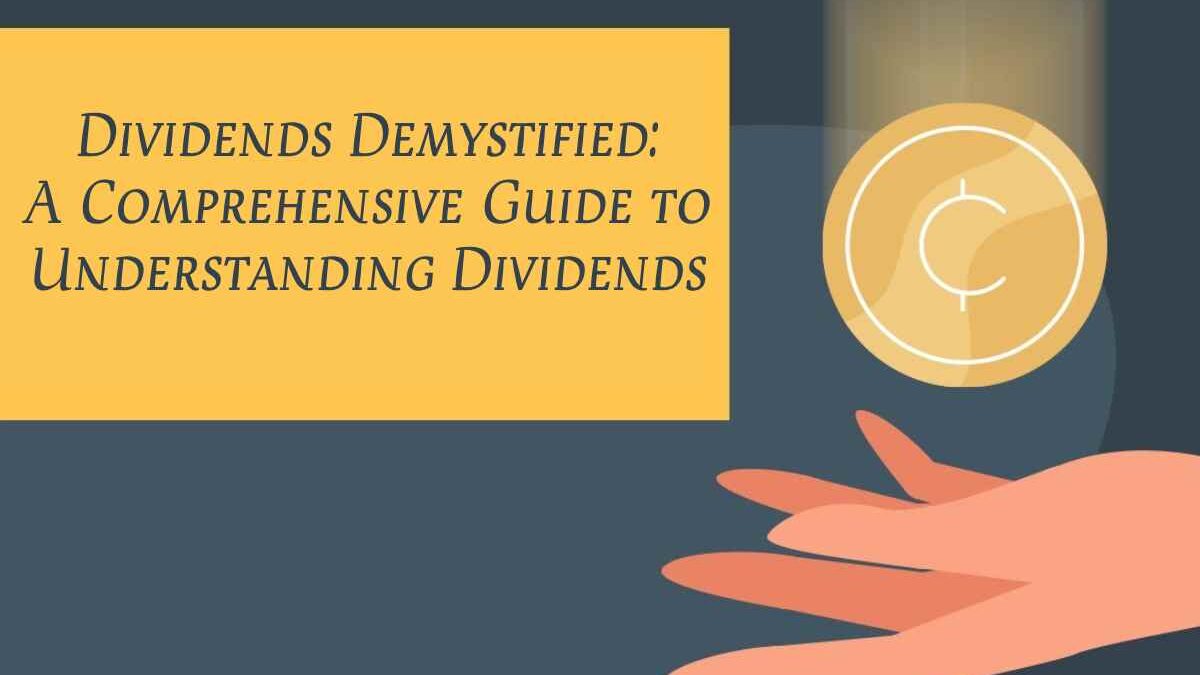Dividends are one of the most appealing aspects of investing in stocks, offering a steady income stream alongside potential capital gains. Whether you’re a seasoned investor or just starting your journey, understanding how dividends work is crucial. In this guide, we’ll dive deep into the world of dividends, covering their calculation, their significance, and how they fit into various investment strategies.
Table of Contents
What are Dividends?
Dividends are a portion of a company’s profits paid to shareholders, often as a reward for investing. The most common form is cash dividends, where shareholders receive a cash payout, typically quarterly. Alternatively, companies may issue stock dividends, providing additional shares instead of cash, or in rare cases, property dividends, where physical assets are distributed.
While dividends offer ongoing income, they differ from capital gains, which arise from selling stocks at a profit. Dividends provide a more predictable income stream, making them attractive for passive income investors.
How Dividends Work
Not all companies pay dividends. Typically, mature, established companies with stable profits distribute dividends. Growth companies, however, may reinvest profits back into the business to fuel expansion instead of paying out dividends.
The dividend process follows key dates:
- Declaration Date: The company announces the dividend amount and key dates.
- Ex-Dividend Date: To receive the dividend, you must own the stock before this date.
- Record Date: The company checks its records to determine eligible shareholders.
- Payment Date: The dividend is paid to shareholders.
Factors Affecting Dividends
A company’s ability to pay dividends depends on its profitability. Profitable companies can distribute earnings to shareholders, while those with weak profits or in growth phases may reinvest instead. Economic conditions influence dividend payouts. During downturns, companies may cut or halt dividends to conserve cash, whereas in strong economic periods, dividends may increase as profits rise.
Companies adopt different dividend policies. Some aim for stable, fixed payouts, while others adjust dividends based on financial performance. Certain sectors, like utilities and REITs, are known for higher-than-average dividends due to their stable cash flows, making them appealing to dividend-focused investors.
If you’re interested in learning more, check out this great post to read about how dividends can fit into your portfolio strategy.
Importance of Dividends for Investors
Dividends are often seen as a reliable income stream, but they also play a significant role in long-term wealth building.
For many investors, dividends provide a passive income source, which can be particularly appealing during retirement. By owning dividend-paying stocks, you can receive regular payouts without the need to sell your investments. This passive income can supplement other income sources, such as pensions or rental income.
One of the most powerful strategies for long-term investors is to reinvest dividends through a Dividend Reinvestment Plan (DRIP). This allows investors to automatically use their dividend payouts to purchase additional shares of stock, compounding their returns over time. Reinvesting dividends can significantly increase your wealth over the long term, especially if you hold dividend-paying stocks for years.
Dividends are not just about short-term income; they can also contribute to long-term wealth. When you reinvest dividends, you increase the number of shares you own, which can lead to greater capital appreciation as the company grows. Over time, this compounding effect can result in substantial growth in your portfolio.
Risks and Considerations
A key risk of dividend investing is the possibility of a dividend cut. If a company’s earnings decline, it may reduce or eliminate its dividend, potentially causing a drop in stock price.
Focusing too much on dividends can create an unbalanced portfolio. It’s important to diversify and avoid relying solely on dividend-paying stocks to capture growth opportunities in other sectors.
Dividends are often taxed, and the rate depends on your income and location. In some regions, dividends are taxed at a higher rate than capital gains, so consider the tax impact on your strategy.
A dividend trap occurs when a stock offers a high yield but is financially unstable. These stocks may be unsustainable, and the company could eventually cut or eliminate the dividend. Always assess a company’s financial health before investing in high-yield dividend stocks.
Dividend Investing Strategies
Investors use various strategies to take advantage of dividends, depending on their goals and risk tolerance.
Some investors focus on stocks with high dividend yields, seeking immediate income. While this strategy can provide substantial income, it’s important to assess whether the company can sustain its dividend payouts. A high yield can sometimes signal that the stock is undervalued, but it can also be a red flag if the company is struggling.
Another popular strategy is dividend growth investing, which focuses on companies that consistently increase their dividends over time. This strategy aims to provide both income and capital appreciation. Companies with a track record of raising dividends typically have strong cash flows and are financially stable.
For those looking for diversification, dividend-focused exchange-traded funds (ETFs) are an excellent option. These ETFs pool together stocks from companies with strong dividend histories, providing exposure to a range of dividend-paying stocks without the need for individual stock picking.
Conclusion
Dividends are a powerful tool in any investor’s toolkit, offering both a reliable income stream and the potential for long-term growth. By understanding how dividends work, how to calculate them, and the factors that influence dividend payouts, investors can make more informed decisions and better align their investments with their financial goals. Whether you’re looking for steady income, capital appreciation, or a combination of both, dividends can play an essential role in your overall investment strategy.


